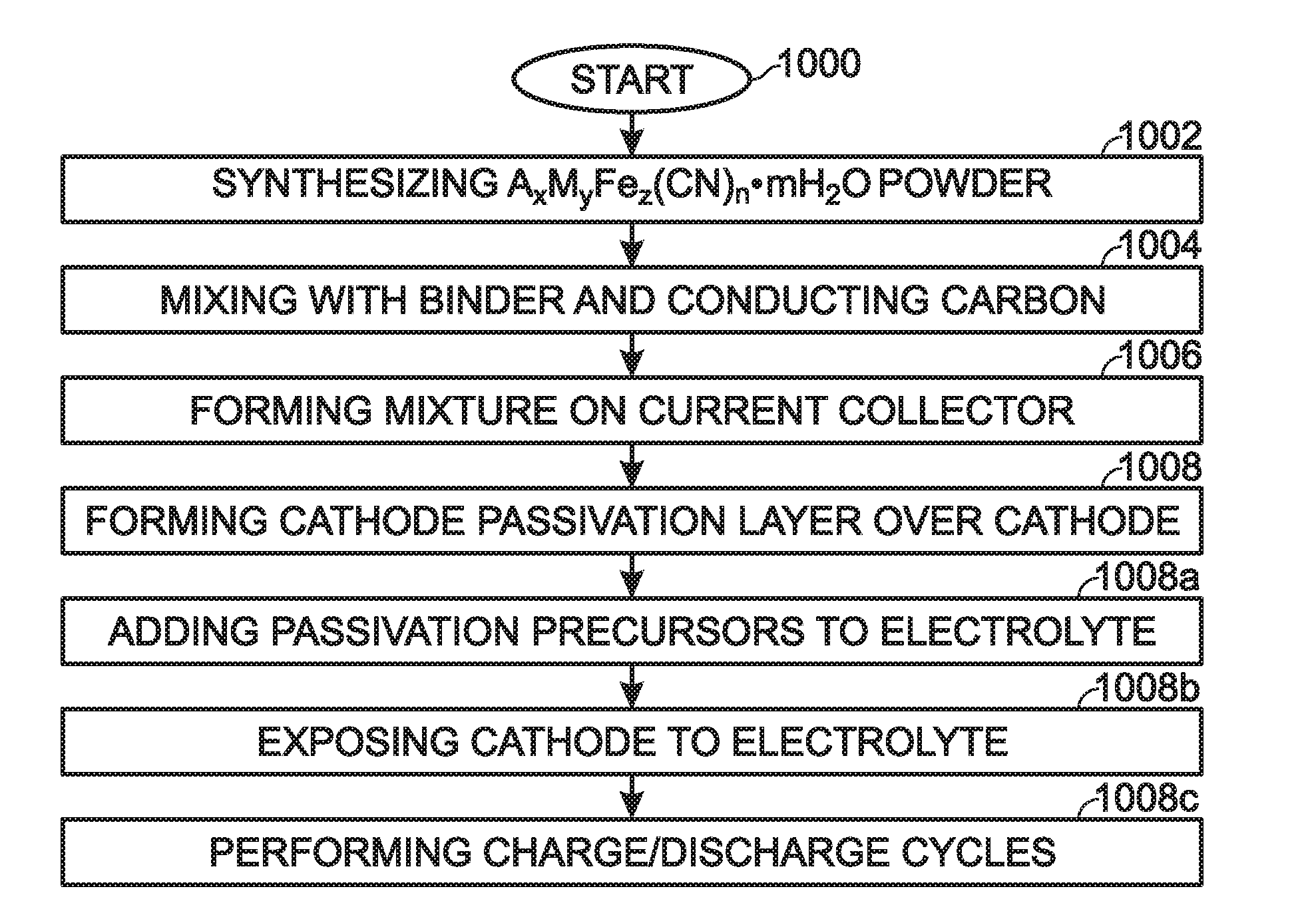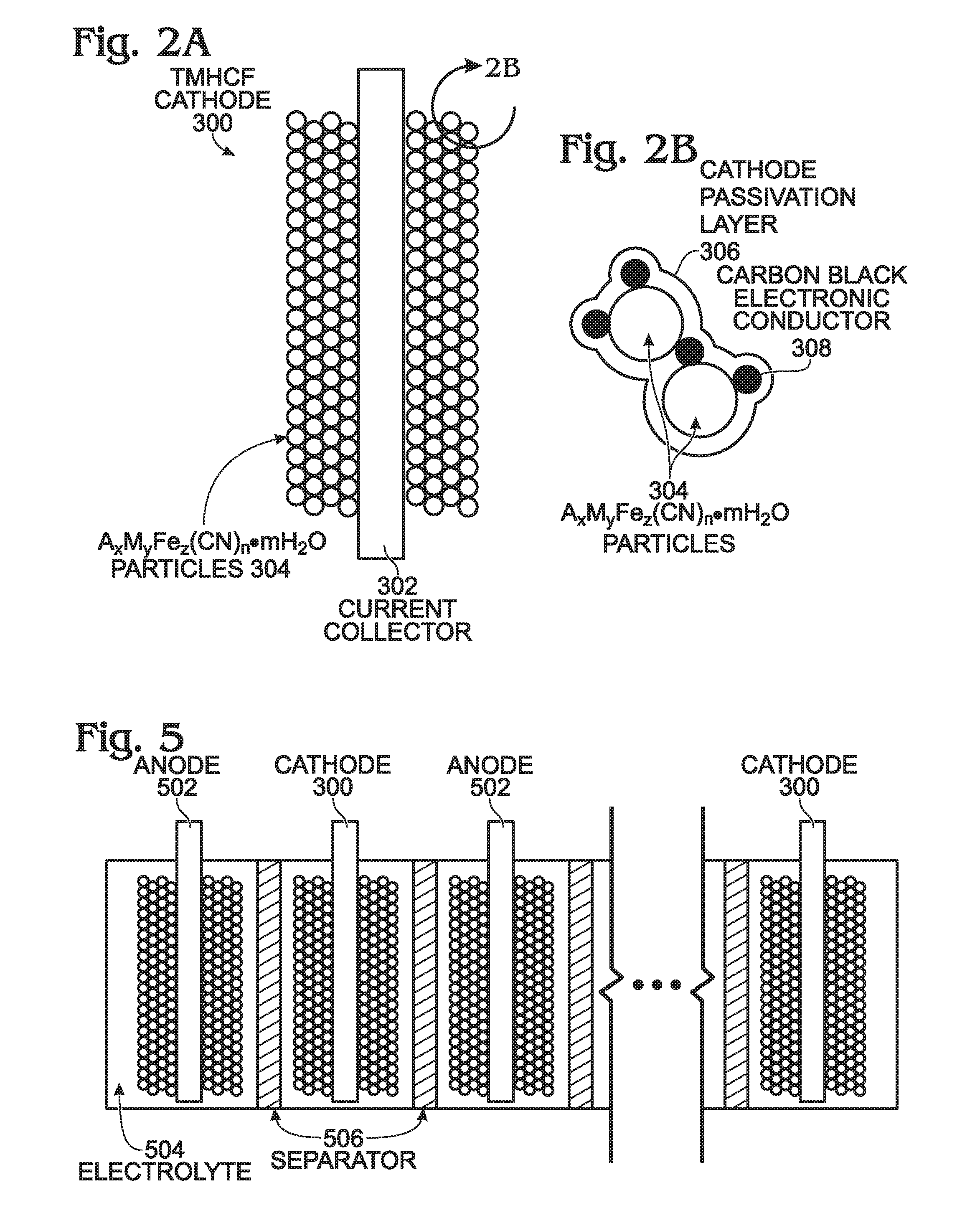Protected Transition Metal Hexacyanoferrate Battery Electrode Synthesis Method
a transition metal and battery technology, applied in the field of electrochemical cells, can solve the problems of destroying the structure of lithium batteries in several charge/discharge cycles, affecting the commercialization of lithium batteries as large-scale energy storage devices, and high lithium metal cost, so as to reduce lattice defects, promote higher capacity and extended life cycle, and structure stable
- Summary
- Abstract
- Description
- Claims
- Application Information
AI Technical Summary
Benefits of technology
Problems solved by technology
Method used
Image
Examples
Embodiment Construction
[0055]FIG. 2A is a diagram depicting a protected TMHCF battery cathode, and FIG. 2B depicts AxMyFez(CN)n·mH2O particles in detail. The TMHCF battery cathode 300 comprises a metal current collector 302. AxMyFez(CN)n·mH2O particles 304 having crystal lattice structure overlie the current collector 302. The A cations are ether alkali or alkaline-earth cations (e.g., sodium (Na), potassium (K), calcium (CA), or magnesium (Mg)), and M is a transition metal:[0056]where x is in the range of 0 to 2;[0057]where y is in the range of 0 to 2;[0058]where z is in the range of 0.1 to 2;[0059]where n is in the range of 1 to 6;[0060]where m is n the range of 0 to 75 and,
[0061]The TMHCF cathode 300 further comprises a cathode passivation layer 306. As can be more clearly seen in FIG. 2B, the AxMyFez(CN)n·mH2O particles 304 are typically formed with a carbon black electronic conductor 308.
[0062]FIGS. 3 and 4 are detailed depictions representing the cathode passivation layer of FIGS. 2A and 2B. In FIG....
PUM
| Property | Measurement | Unit |
|---|---|---|
| time | aaaaa | aaaaa |
| energy density | aaaaa | aaaaa |
| voltage | aaaaa | aaaaa |
Abstract
Description
Claims
Application Information
 Login to View More
Login to View More - R&D
- Intellectual Property
- Life Sciences
- Materials
- Tech Scout
- Unparalleled Data Quality
- Higher Quality Content
- 60% Fewer Hallucinations
Browse by: Latest US Patents, China's latest patents, Technical Efficacy Thesaurus, Application Domain, Technology Topic, Popular Technical Reports.
© 2025 PatSnap. All rights reserved.Legal|Privacy policy|Modern Slavery Act Transparency Statement|Sitemap|About US| Contact US: help@patsnap.com



